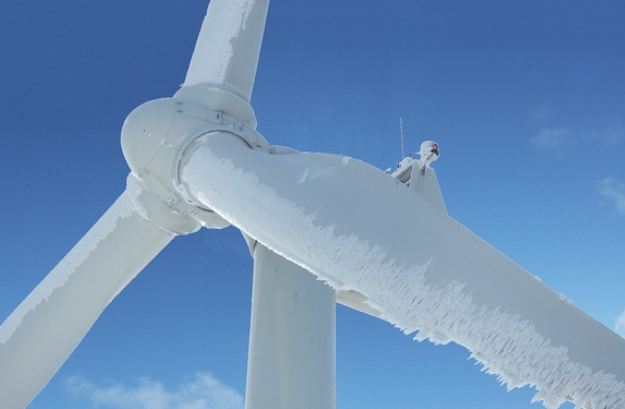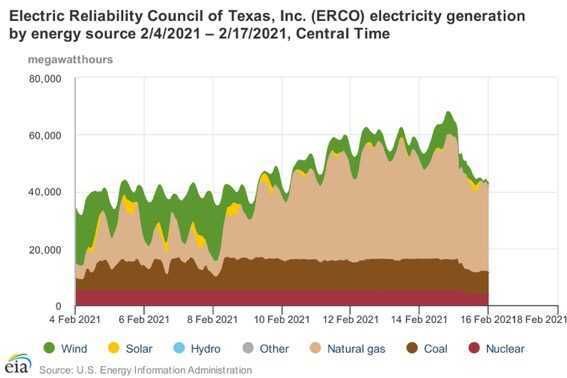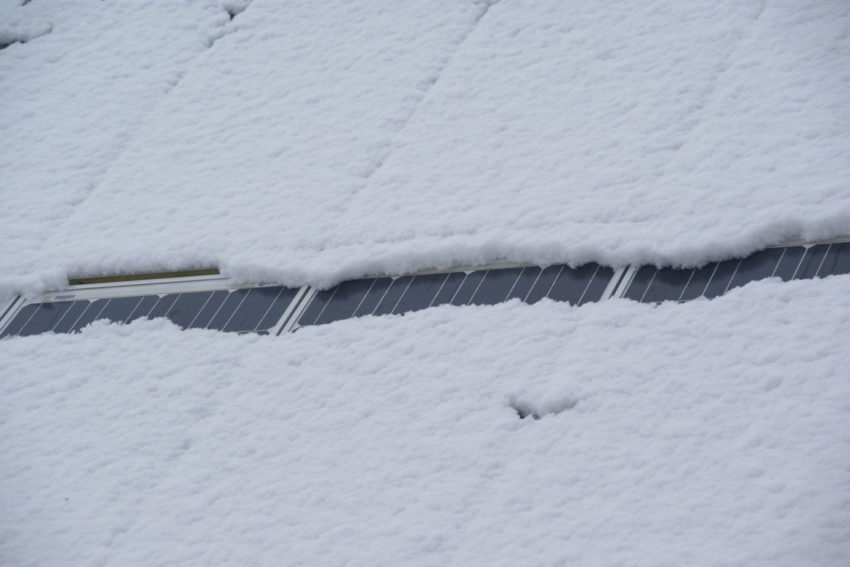
The wind and solar debacles playing out in the US, UK and Germany have finally brought reality to bear and exposed the renewable energy ideologues as outright frauds. And, from our perspective, about time, too.
The acolytes chanting about our ‘inevitable transition’ to an all wind and sun powered future are like the overly optimistic chap jumping from the Empire State Building. Quizzed by someone leaning from the third-floor window about his welfare – the jumper responds: “Everything is going just fine, so far”.
Well, of course, gravity did its ultimate turn.
And, so it is, with the nonsense that entirely sunshine-dependent solar power and weather-dependent wind power amount to meaningful power generation sources and will soon entirely replace coal, gas and nuclear power.
The consequences of the exuberance of Texas’s wind and solar obsession work, as we’ve reported several times, included 4 million people left freezing in the dark during its big freeze on 16-17 February. The hard numbers tell the story:

As does this piece from The Australian’s Economics Editor, Judith Sloan.
Texas is what you get when cowboys take over the grid
The Australian
Judith Sloan
8 March 2021
There are plenty of places in the world I’d rather not live. But I always thought Texas wouldn’t be so bad. Over recent years, many Californians have come to a similar conclusion, fleeing their overregulated, high-tax state to make Texas their home. In the past decade, nearly 700,000 Californians have relocated to Texas, a state with no local income tax.
There are 29 million people living in Texas, with the state’s population growing rapidly in recent times. Energy consumption in Texas rose by 20 per cent between 2010 and 2019. For Texans who recently endured a week of rolling power blackouts that also affected domestic water supplies, enthusiasm for their state must have been sorely tested. At various times, about four million residents were without power, some for several days.
In the context of extremely low temperatures and widespread snowstorms, the human and economic costs were considerable. A number of deaths were recorded, with one family succumbing to carbon monoxide poisoning as result of using the family car to keep warm. Many businesses had to close and access to vital supplies was difficult.
The fallout of what happened is not over, with the chief executive of the Texas power grid losing his job last week. A number of Texan energy companies are now close to being insolvent as the astronomical charges associated with the February blackout are levied. The total of these charges is estimated to be $US2.5bn.
It’s useful to answer some critical questions about this calamitous episode because the answers apply to many countries and regions within countries with high penetration of renewable energy in their electricity grids.
It’s worth pointing out that much of the media coverage of the Texas disaster has been driven by the requirement to lay the blame on every factor other than renewables. “No, wind farms aren’t the main cause of the Texas blackouts” is a typical heading of such opinion pieces.
By way of background, Texas runs an essentially independent electricity grid. There is very little interconnection with other states. Texas is not part of the national grid and its electricity sector is not subject to federal regulations, although renewable operators are eligible for federal subsidies.
The summer electricity-generating capacity in Texas is about 86,000 megawatts but is lower in winter at about 67,000 megawatts, when some plants are taken offline for maintenance and wind-generated electricity is expected to be lower.
In 2009, coal-fired plants generated about 37 per cent of electricity in Texas. But since then, a number of plants have closed and coal now accounts for less than one-fifth of electricity generated. The big growth has been in wind and solar power, with investment in these sources expedited by the absence of any federal regulatory oversight. There are about 150 wind farms in Texas and their nameplate capacity totals about 30,000 megawatts. On one day in May last year, wind and solar generated half of the energy demands of Texas, a record.
But there are times when there are negligible amounts of electricity sourced from wind, including during the recent crisis. The blades of many of the turbines froze as temperatures plummeted and had to be taken offline.
While it was unusually cold this February in Texas (and other parts of the US), the weather pattern was not completely out of the ordinary. A similar cold snap had occurred within the decade.
The fundamental problem with the Texas grid was the failure to “winterise” the assets, meaning electricity could still be generated in the context of very cold, snowy conditions. This has occurred in other states where very cold conditions are more likely.
The fact some of the gas-fired plants were not able to operate because they didn’t have a ready supply of gas – they were relying on pipeline deliveries – also contributed to the problem. Wind and solar were unable to make any meaningful contribution.
As it turns out, more interconnection with other states would not have helped much because adjoining states were facing similar weather conditions and were short of electricity themselves. By contrast, had there been more coal-fired electricity available — it is much less weather-dependent – the Texas blackouts may never have occurred.
But here’s the rub: Texas has been governed by Republican administrations for more than two decades. There has been considerable political support for renewables in the state, including a renewable energy target similar to ours, declaration of renewables zones and massive public investment in supporting transmission.
However, without (expensive) investment in the required, well-maintained and winterised firming (backup) capacity to accommodate the growth of renewables, the electricity system developed into a catastrophe-in-waiting. The Texan government had rejected the option of creating a capacity market to ensure backup is in place when needed. Rather, deregulated prices were relied on to provide the signals to investors to ensure the reliability of the electricity system. Note here that the usual wholesale price of electricity in Texas is about $US25-20 per megawatt hour but rose to $US9000 during the recent blackout period
So what are the lessons for Australia as the penetration of renewables increases and various state governments actively use taxpayer funds and regulations to promote further penetration?
The first is that black swan events happen and must be planned for. We are unlikely to get a cold snap like Texas but wind droughts and very long hot periods are clearly possible. The irony is that climate change theorists predict more extreme weather events, yet renewable energy is often not a suitable source of electricity generation for these times.
Second, in the transition to greater renewables penetration, the economics of reliable forms of electricity generation are damaged, causing the owners of these plants to scrimp on maintenance and refuse to make further investments. This is often the prelude to premature closure, now being foreshadowed in NSW.
When the grid fails or comes close to failing, the proponents of renewables will often point to the failure of coal-fired plants, for instance. But the key here is that such outcomes are both likely and the inevitable corollary of one form of generation (renewables) being favoured over others.
The final point is there is a choice between affordable, reliable and lower emissions – we can have two of these characteristics, but probably not three. The politicians should be upfront about this.
The Australian


What part of it don’t work and they don’t care isn’t understood?
The common international two party political system is the handmaiden; as in willing to do anything, for private financiers based on Malthusian philosophy that counts lower classes, including politicians who just don’t get it, as expendable when superfluous to requirements; as in the Industrial Revolution & now doing ex-bank employees jobs raising their profits – a double edged sword – handy isn’t it? Set and forget; just make sure the account payments are closed at death as accounts have been milked for more than 30 years; deaths are state, companies are national & they don’t meet, with it being in the political-media too hard-not interested basket!
Crime is a top down process otherwise tax havens frequented by pollies and royalty wouldn’t exist: jump in, go along to get along, the more the merrier & screw the rest. As lower class criminals keep saying, they just want to get in for their share. Unfortunately they can only steal from other working class as the rich are surrounded by security.
But obviously that’s too difficult to understand.
Society used to be for mutual protection, now it’s for minority profit.